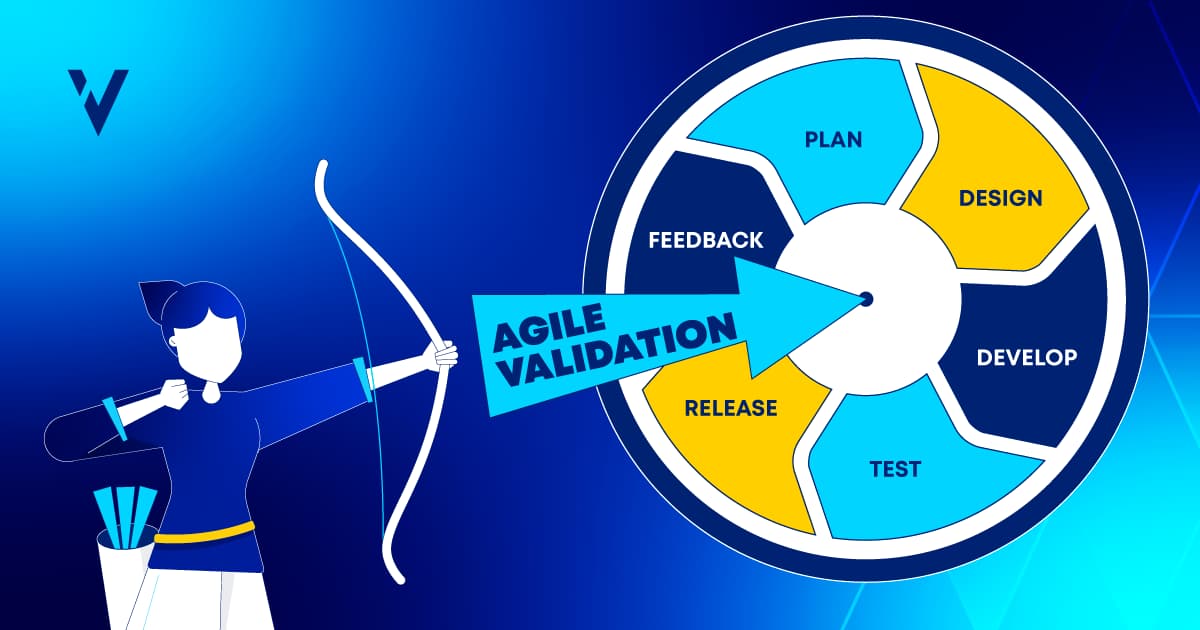In today’s fast-paced software development environment, Agile methodologies have become the gold standard. Agile has revolutionized how software is built, particularly in industries where speed and adaptability are crucial, by emphasizing flexibility, iterative progress, and collaboration. However, one area where traditional methods still hold sway is computer system validation (CSV).
This blog post will explore why CSV is misaligned with Agile principles and introduce computer software assurance (CSA) as a superior alternative for Agile validation within the software development lifecycle (SDLC).
Understanding Computer System Validation (CSV)
Computer system validation (CSV) has long been the cornerstone of software validation in regulated industries such as pharmaceuticals, biotechnology, and medical devices. It is a structured, documentation-heavy process that follows a linear, sequential (waterfall) approach to software development.
While CSV has been effective in ensuring compliance and quality, it comes with significant challenges. The framework relies on comprehensive documentation and extensive testing upfront, which can sometimes lead to delays and increased costs. You must meticulously document each phase and provide extensive validation reports to demonstrate compliance. This approach, while thorough, is often cumbersome and slow, making it difficult to keep up with the rapid pace of modern software development.
Agile Development Principles
Agile development, on the other hand, thrives on flexibility and speed. Agile methodologies emphasize iterative progress, where developers create software in small, manageable increments. This allows development teams to quickly adapt to changes, incorporate feedback, and deliver value to customers more rapidly.
The Agile Manifesto, with its core principles of customer collaboration, responsiveness to change, and working software over comprehensive documentation, is fundamentally at odds with the traditional CSV approach.
For instance, Agile's focus on delivering value quickly can be at odds with CSV's requirement for upfront, detailed documentation, and the iterative nature of Agile development makes it difficult to define and validate all software requirements at the outset, a fundamental tenet of CSV.
CSA: A Better Fit for Agile
Recognizing CSV's limitations in modern software development environments, the FDA introduced the concept of computer software assurance (CSA). The CSA methodology represents an evolution in software validation, offering a more flexible, quality-centric approach compared to the document-heavy methods of CSV.
Computer software assurance focuses on critical thinking and risk assessment, prioritizing activities that have the most significant impact on patient safety and product quality. It also encourages the use of digital technologies and vendor-provided qualification documentation for functional verification to minimize redundant testing and free up resources for more critical tasks. This shift in focus aligns well with Agile principles, making CSA a more suitable validation methodology for integrating Agile values within the SDLC.
Benefits of CSA in Agile Development
The alignment of CSA with Agile development principles brings several benefits:- Flexibility and Efficiency: CSA’s risk-based approach allows for more flexible and efficient validation processes. Instead of following a rigid, step-by-step process, teams can adapt their validation activities based on the specific risks and requirements of each project. This flexibility is crucial in Agile environments, where changes are frequent and rapid adaptation is necessary.
- Proactive Risk Identification: CSA ensures that the most critical aspects of the software are thoroughly validated by focusing on identifying and mitigating risks early in the development cycle. This approach not only improves the overall quality and safety of the software but also aligns with Agile’s emphasis on delivering working software quickly and iteratively. Another plus―prioritizing the highest-risk features of a system helps minimize compliance costs and allocate resources more efficiently.
- Fewer Documents Generated: One of CSV's most significant challenges is the extensive documentation required at every stage of the validation process. With its risk-based focus, CSA reduces the need for unnecessary documentation, allowing teams to concentrate on high-value activities that directly contribute to the software's quality and functionality.
- The Use of Unscripted Testing: Unscripted testing allows testers to adapt their approach based on the software's behavior, aligning with Agile principles of adaptability to change and immediate feedback. While scripted testing follows predefined test cases and detailed steps, unscripted testing relies on the tester's intuition and experience and promotes collaboration between testers and developers. This allows development teams to adjust quickly to changing requirements, ensuring relevant, effective testing throughout the project.
Ad hoc testing, error-guessing, and exploratory testing are examples of this alternative testing method, which is highlighted in the development appendices of the second edition of ISPE's GAMP 5. It states, "Testing should not be limited to detailed and prescriptive step-by-step protocols—the use of exploratory and other unscripted techniques is encouraged to extend test coverage and improve defect detection."
Implementing CSA in Agile Environments
Transitioning from CSV to CSA in an Agile environment involves several key steps:- Assess Current Processes: Start by assessing the current validation processes and identifying areas where CSA can be integrated. This assessment should include a thorough understanding of the risks associated with the software and the existing documentation requirements.
- Educate and Train Teams: Educate and train validation and development teams on the principles and practices of CSA. This training should emphasize the risk-based approach and how it aligns with Agile methodologies.
- Develop Risk-Based Validation Plans: Create validation plans that focus on identifying and mitigating risks. These plans should be flexible and adaptable, allowing for changes and iterations as the project progresses.
- Implement CSA Practices: Begin implementing CSA practices into your Agile development processes. This may involve redefining roles and responsibilities, adjusting documentation requirements, and adopting new validation tools and techniques.
- Monitor and Adapt: Continuously monitor the effectiveness of CSA in your Agile environment and adjust as necessary. This iterative approach ensures that the validation process remains aligned with Agile principles and delivers the desired outcomes.
ValGenesis VLMS: The Only CSA-Ready Solution for Agile Validation
To facilitate this transition and support Agile validation within the software development lifecycle, consider the ValGenesis Validation Lifecycle Management System (VLMS). ValGenesis VLMS is the only CSA-ready validation software solution on the market today. It offers comprehensive features that align with CSA principles, enabling teams to manage validation activities efficiently and effectively within an Agile framework.
With ValGenesis VLMS, teams can leverage a centralized platform for risk-based validation planning, execution, and documentation. The system’s flexibility supports iterative development and rapid changes, ensuring that validation processes are both efficient and compliant. Teams can apply unlimited testing types (ad hoc, exploratory, unscripted, positive, negative, performance, security, boundary, scripted, white box, black box) based on risk outcome. The tool further streamlines the process by auto-populating protocols with test results from automated test execution, with the possibility of integrating third-party test automation software.
Ready to Embrace Agile Validation?
As the software development landscape continues to evolve, the need for more flexible and efficient validation methodologies becomes increasingly apparent. Traditional CSV processes, with their rigid and documentation-heavy approach, are misaligned with Agile development principles. The CSA methodology offers a more suitable alternative, emphasizing a risk-based approach, critical thinking, and reduced documentation burden.
By adopting CSA and leveraging ValGenesis VLMS, Agile teams can ensure that their validation processes support iterative progress, rapid adaptation, and high-quality software delivery. As more organizations transition to CSA, the benefits of this modern validation methodology will become even more evident, paving the way for faster, safer, and more efficient software development in regulated industries.
Want to learn more? Watch the webinar "6Ts to CSA Adoption."
Computer Software Assurance (CSA)
Emmanuel Cansino
Senior Director Industry Solutions



